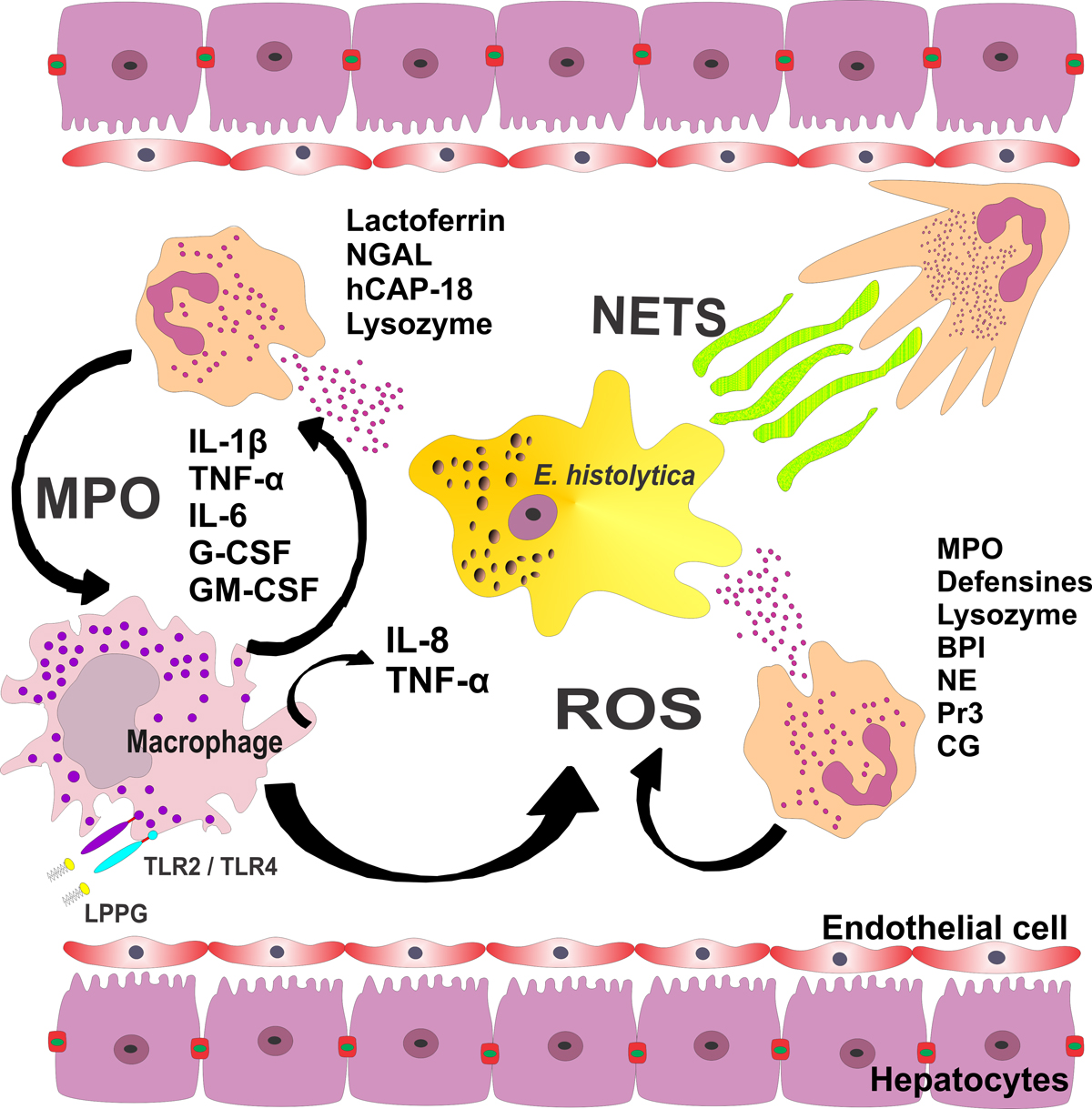Figure 2.

Download original image
Activated neutrophils provide signals for the activation and maturation of macrophages, which in turn release IL-1β, TNF-α, G-CSF, and GM-CSF. These cytokines extend the life span of neutrophils at sites of inflammation. The interaction of lipopeptidophosphoglycan (LPPG) with TLR-2 and TLR-4 results in the activation of NF-kappa B and the release of IL-8, IL-10, IL-12p40, and TNF-α from human macrophages. Activated neutrophils enhance the production of reactive oxygen species (ROS), activating NF-kB and increasing neutrophil degranulation. Primary granules contain MPO, defensins, lysozyme, bactericidal/permeability-increasing protein (BPI), neutrophil elastase (NE), proteinase 3 (PR3), and cathepsin G (CG). Secondary granules are characterized by the presence of lactoferrin, neutrophil gelatinase-associated lipocalin (NGAL), human cationic antimicrobial protein 18 or cathelin (hCAP-18), and lysozyme. MPO can bind to monocytes, which might lead to the production of ROS and proinflammatory cytokines. Another function of neutrophils is the formation of neutrophil extracellular traps (NETs), composed of DNA bound with antimicrobial components (e.g., bacterial permeability-increasing protein, myeloperoxidase, elastase, lactoferrin). NET formation may have an important role in combating amebas.
Current usage metrics show cumulative count of Article Views (full-text article views including HTML views, PDF and ePub downloads, according to the available data) and Abstracts Views on Vision4Press platform.
Data correspond to usage on the plateform after 2015. The current usage metrics is available 48-96 hours after online publication and is updated daily on week days.
Initial download of the metrics may take a while.


